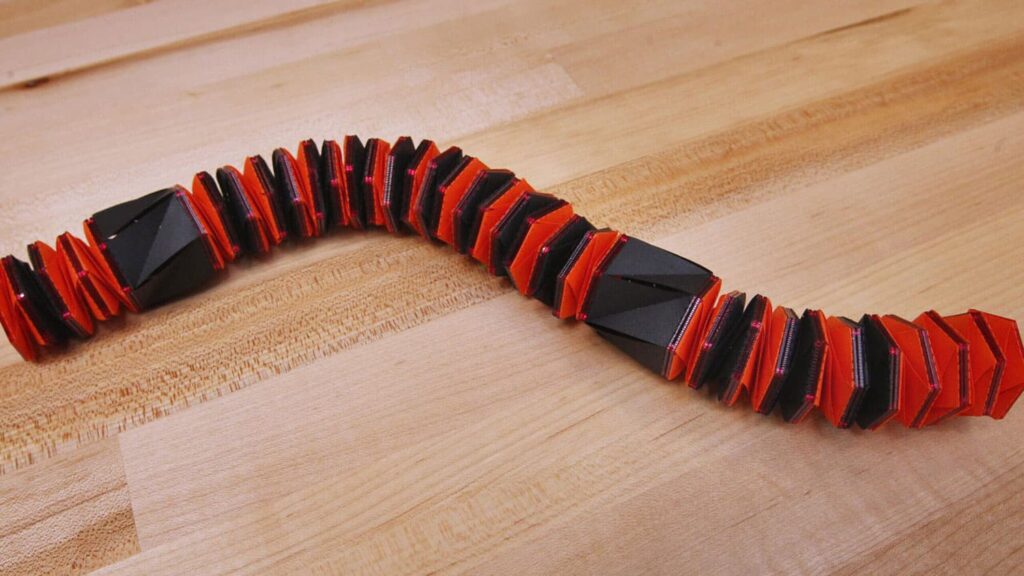The combination of ancient paper folding techniques and modern materials science has resulted in a remarkable breakthrough in the field of soft robotics.
Princeton and North Carolina State University engineers have created an experimental new caterpillar-inspired bot that can easily navigate through mazes by bending and twisting.
The challenge of steering a soft robot is often hindered by additional equipment that reduces its flexibility.
However, the new design solves this problem by integrating the steering system directly into the robot’s body. This innovative design will open up new possibilities for soft robotics and inspire further developments in the field.
The new robot, called Robotapillar, was created using modular cylindrical segments, which can operate independently or join to form a longer unit, all contributing to the robot’s ability to move and steer. This flexible robot can crawl forward and reverse, pick up cargo, and assemble into longer formations.
The researchers behind this project believe that this concept of modular soft robots can provide insight into future soft robots that can grow, repair, and develop new functions. The robot’s ability to assemble and split up on the move allows it to work either as a single robot or as a swarm. However, for most applications, they’d stay joined together in caterpillar-like form.
“Each segment can be an individual unit, and they can communicate with each other and assemble on command,” said Tuo Zhao, a postdoctoral researcher at Princeton. “They can separate easily, and we use magnets to connect them.”
The PET (polyethylene terephthalate) skin of each cylindrical segment has an interesting folding pattern known as the Kresling-type origami folding pattern. This pattern is made up of multiple diagonal folds that allow the segment to twist into a flat disc form and then expand back into a cylinder.
Along each fold line, there are thin control strips made of liquid crystal elastomer and polyimide. These strips are overlaid by a strip of silver nanowires that connect to a power source. By applying an electrical current to the nanowire network, the control strips heat up, allowing for the transformation of the cylindrical segment.
Researchers have used a liquid crystal elastomer strip and a polyimide strip to create a unique asymmetrical reaction along the fold lines, which causes the segment to twist down into a disc. This reaction is triggered by heat, which causes the liquid crystal elastomer strip to shrink and the polyimide strip to expand. When the electrical current turns off, the segment expands into a cylinder. By activating all of the segments in this manner, the robot can be moved forward or backward.
The soft robot can separate and reassemble, and it can crawl through twisting spaces.
The Robotapillar’s body can also curve and move in a particular direction. This is achieved by activating the nanowire “heater” strip on just one side of a segment, which causes the segment to contract on that side only. If several adjacent segments are triggered in this manner, the robot’s body curves in that direction. Currently, scientists are working on improving the robot’s speed and steering.
Journal Reference
Wu, S., Zhao, T., Zhu, Y., & Paulino, G. H. (2024). Modular multi-degree-of-freedom soft origami robots with reprogrammable electrothermal actuation. Proceedings of the National Academy of Sciences, 121(20), e2322625121. DOI: 10.1073/pnas.2322625121
>>> Read full article>>>
Copyright for syndicated content belongs to the linked Source : Tech Explorist – https://www.techexplorist.com/soft-robotapillar-crawls-ease-through-loops-bends/83701/#utm_source=rss&utm_medium=rss&utm_campaign=soft-robotapillar-crawls-ease-through-loops-bends
